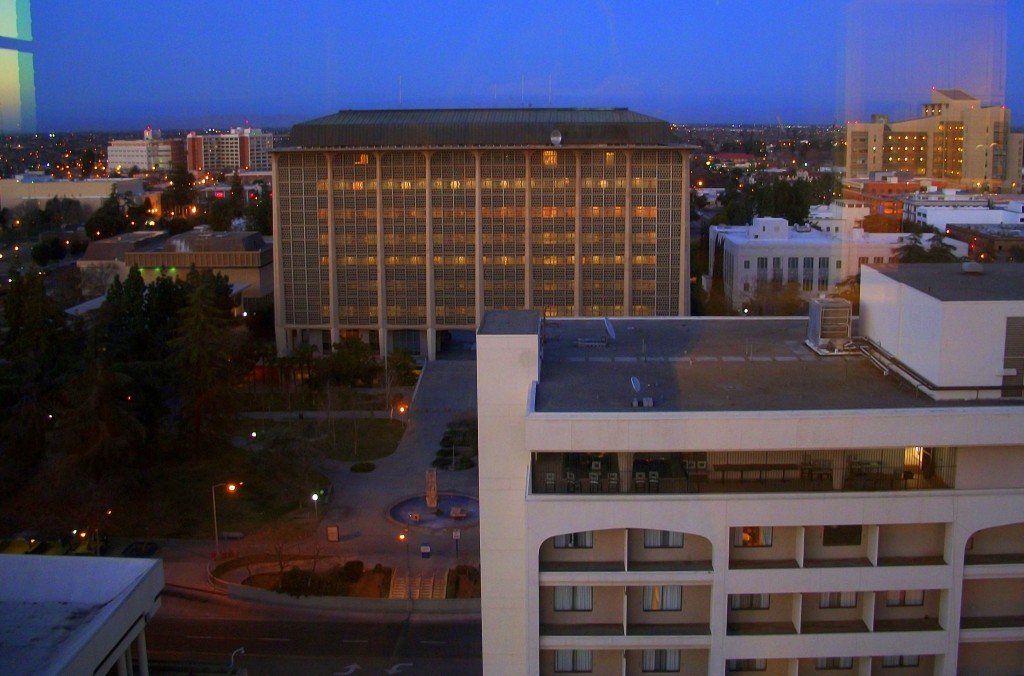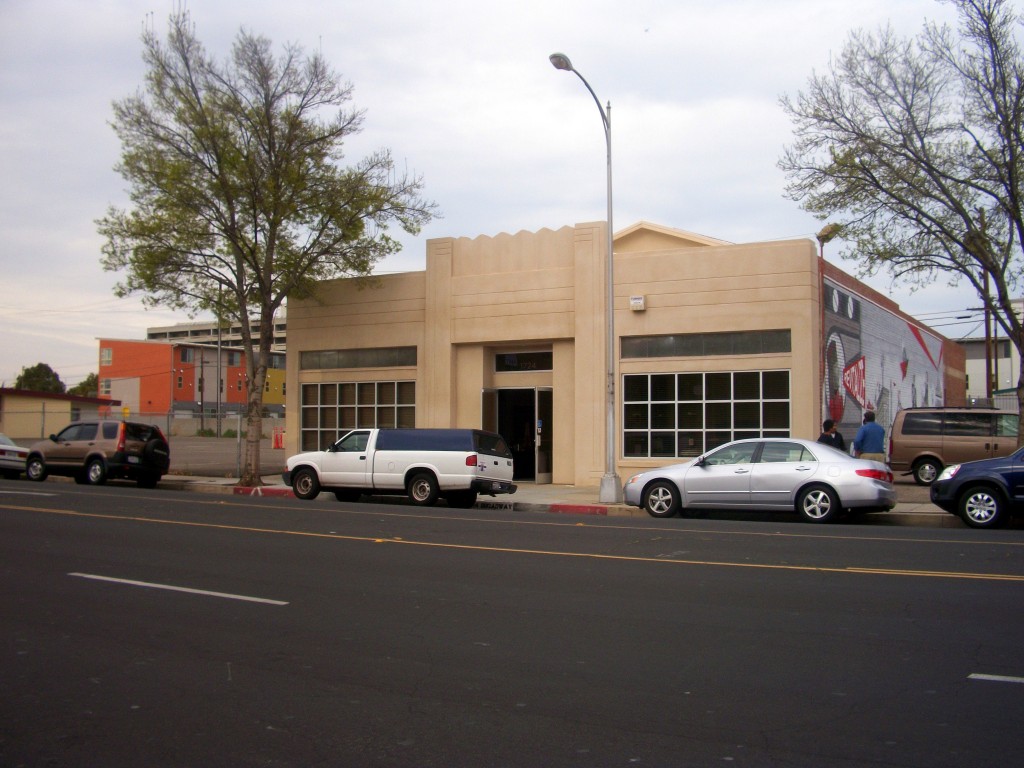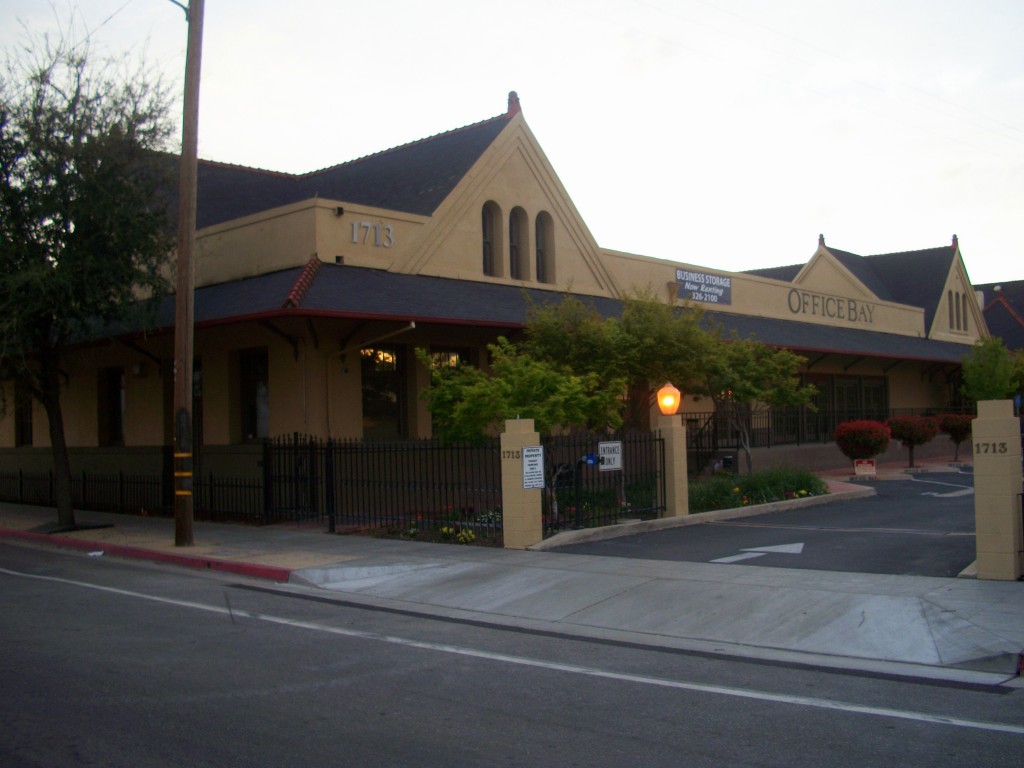Downtown Fresno Office Market Potential
The following post is about the expectations Strategic Economics (SE) has made about the office market in downtown Fresno. You can read about the current state of the market, here.
POTENTIAL TENANTS

View of the County Courthouse from a Pacific Southwest loft. The government will continue to occupy a huge percentage of office space in downtown. This could potentially increase the demand for nearby retail, office, and residential space.
- Government: The Plan Area is anchored by government offices and has the potential to attract more Federal, State and Local public agencies. Downtown Fresno can easily be the region’s center for the government. Historic trends support this. During the Great Depression, Franklin D. Roosevelt’s “New Deal” built five public buildings in what is called the Civic Center. The presence of the government was greatly increased during the 60s and 70s.
- Government-related professionals: Law offices capitalize on the proximity of government offices. It has been reported that some law offices have moved North because of the easy access to the freeway. SE concludes there will always be a stable demand for law offices to be near government offices.
- Medical: There is a concentration of medical and medical-related offices near the UCSF Fresno Medical Education Program and Fresno Community Regional Medical Center. There is potential for more administrative offices to support medical campuses.
- Creative Businesses: Creative businesses are typically part of marketing, technology, architecture, design, and cultural-based industries. These businesses are typically small in size and seek inexpensive space. They are most suitable for rehabiliated historic buildings. They can better utilize a smaller floor plan, unlike large tenants, and do not require the extensive tenant improvements. Creative businesses are most likely to thrive in a historic environment.
INVESTMENT OPPORTUNITIES

This building was recently renovated for small offices. Very little public money was given and used only to improve the facade. There are several characteristics about this building that makes it perfect for the Cultural Arts District: it accommodates for creative businesses, it has a mural, it is located near new development, it is highly visible, and there is adjacent on-street parking. Offices are still available.
- Rehabilitation of existing office buildings: Existing historic office buildings create a large enough stock of office space that can be rehabilitated. Facades can be removed to create more offices if demand increases.
- Adaptive reuse of industrial buildings: Downtown has a large inventory of vacant industrial space. These buildings are structurally sound but are in need of cosmetic work. It makes economic sense to rehabilitate these buildings. There is smaller space to absorb and the floor plans are more open. Industrial buildings are placed on highly visible streets and have easy access to parking and freeway. Landlords will have an easier time to fill the space than with large historic buildings.
- Connect smaller professional firms with historic/rehabilitated buildings: Smaller businesses are best suited for most of the existing office and industrial space in downtown. They require less space and can make do with the inefficient layout of a historic building without little improvements.
- Conversion of vacant sites and parking lots to large offices: Large office tenants might be attracted to vacant or underutilized land. Developers have the opportunity to construct built-to-suit office space that accommodates a tenant’s needs. Large tenants can afford to pay for the higher rent charged in new developments.

The Southern Pacific Railroad Depot is on the National Register of Historic Places. This is a great example of how it is possible an investor to renovate a historic building. The depot has been converted to office spaces. ACEL, a entrepreneurial leadership charter school, occupies the building. There are smaller offices still available.
EXPECTED OFFICE DEMAND

You will notice that the numbers range from "low" to "high." SE cannot state, exactly, what the demand will be. It depends on how much the City improves public infrastructure. Public money will "kick start" private investment.
SE looked at industries that grew between 1990 and 2009 and the expected growth of industries between 2010 and 2035. They created a list of office-based industries that are best suited for downtown Fresno. The list includes:
- State and local government excluding education (little to no private sector office space)
- Administrative and support services
- Ambulatory health care services (medical offices)
- professional, scientific, and technical services
SE estimates that the plan area could capture between 17% to 25% (2.5-3.9 million square feet) of the regional demand in office space between 20120 and 2035. Downtown currently contains an office inventory of 3.5 million square feet.
___
Read more about the real estate market in downtown Fresno:
___
Have a lovely day in Fresno!
Veronica Stumpf, Co-Broker
Stumpf and Company, Commercial Real Estate
DRE Lic. #01906952


Comments
One Response to “Downtown Fresno Office Market Potential”Trackbacks
Check out what others are saying...[...] Office Market - Potential [...]